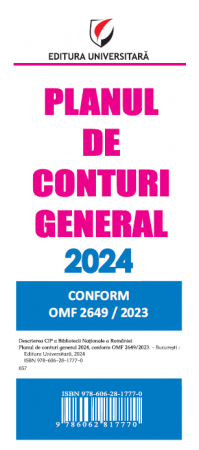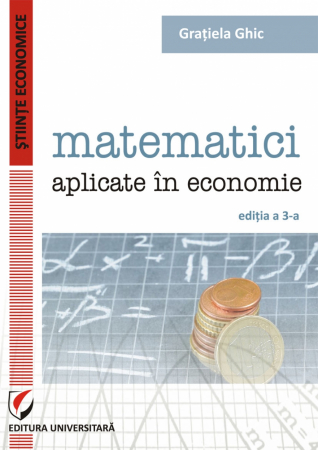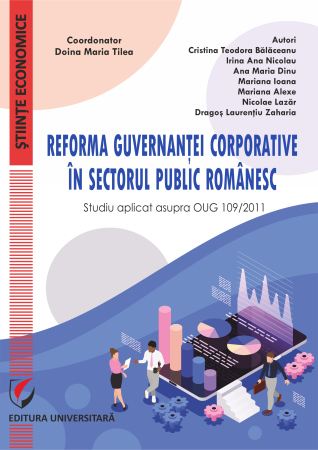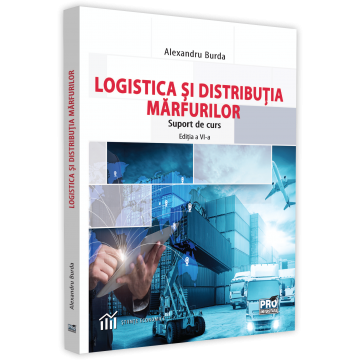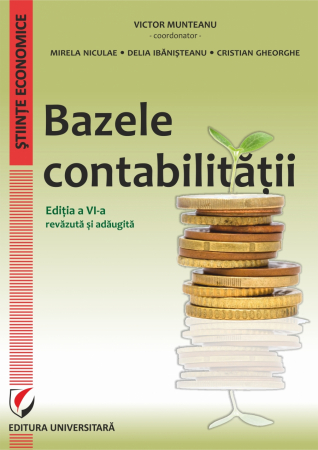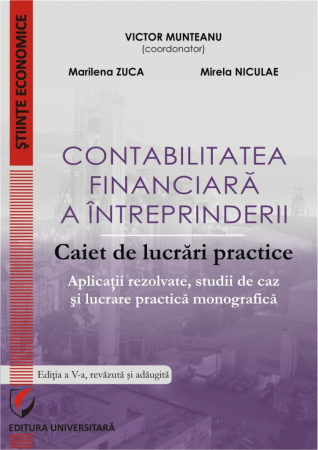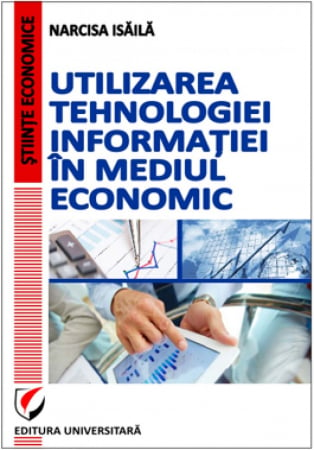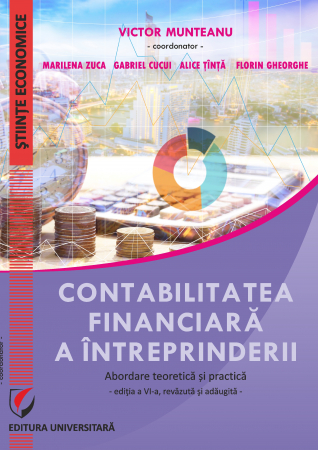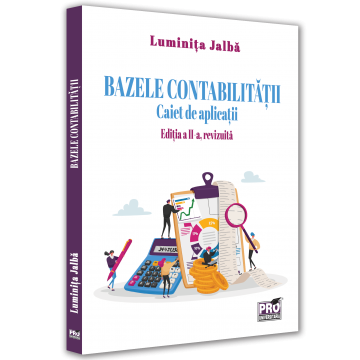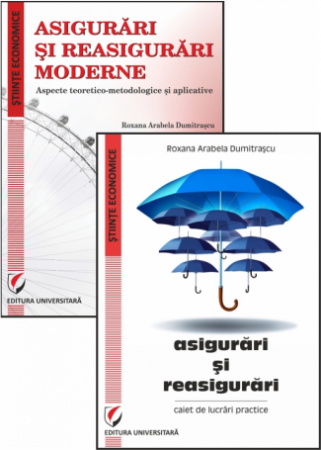Manuscript proposals: [email protected] / 0745 204 115 //// Tracking orders Individuals / Sales: 0745 200 357 / Orders Legal entities: 0721 722 783
ISBN: 978-606-28-0811-2
DOI: 10.5682/9786062808112
Publisher year: 2018
Edition: I
Pages: 238
Publisher: Editura Universitară
Author: Valentina Zaharia, Mihaela-Mirela Dogaru, Elena David, Viorel Mihalcioiu
Product Code:
9786062808112
Do you need help?
0745 200 357
- Description
- Download (1)
- Authors
- Content
- More details
- Reviews (0)
Several definitions have been formulated in the literature:
The first definition considers that HRM represents a set of activities oriented towards the human factor, which have as main objectives the conception, design, optimal use, and socio-human development;
According to other HRM specialists, it represents the totality of the activities that regulate the optimal use of human resources, for the benefit of the organization, of each individual and of the community in general;
Another approach considers that HRM the totality of the activities that follow the most efficient use of “human capital”, in order to achieve the organizational objectives, simultaneously with ensuring the conditions that guarantee the satisfaction of the employees' needs;
Another author defines HRM as a set of decisions that affect the relations between the main social partners - the employer and the employees - meant to ensure the increase of productivity and efficiency of economic activity;
According to other specialists, HRM represents the totality of the measures elaborated at interdisciplinary level regarding all the activities occasioned with the staff recruitment, its selection, employment, motivation, until the employment contract ends.
The first definition considers that HRM represents a set of activities oriented towards the human factor, which have as main objectives the conception, design, optimal use, and socio-human development;
According to other HRM specialists, it represents the totality of the activities that regulate the optimal use of human resources, for the benefit of the organization, of each individual and of the community in general;
Another approach considers that HRM the totality of the activities that follow the most efficient use of “human capital”, in order to achieve the organizational objectives, simultaneously with ensuring the conditions that guarantee the satisfaction of the employees' needs;
Another author defines HRM as a set of decisions that affect the relations between the main social partners - the employer and the employees - meant to ensure the increase of productivity and efficiency of economic activity;
According to other specialists, HRM represents the totality of the measures elaborated at interdisciplinary level regarding all the activities occasioned with the staff recruitment, its selection, employment, motivation, until the employment contract ends.
-
Human Resources Management and Teamwork
Download
MIHAELA-MIRELA DOGARU
VALENTINA ZAHARIA
VIORE MIHALCIOIU
ELENA DAVID
VALENTINA ZAHARIA
VIORE MIHALCIOIU
ELENA DAVID
CHAPTER 1
NOTIONS / INTRODUCTORY REGARDING HUMAN RESOURCES MANAGEMENT / 7
1.1. Definition of HRM / 7
1.2. Evolution of MRU / 8
1.3. Basic activities of MRU / 10
1.4. Human Resource Management Functions / 13
1.4.1. Human Resources Insurance / 13
1.4.2. Human Resources Development / 13
1.4.3. Motivation of Human Resources / 14
1.4.4. Maintaining Human Resources / 14
1.5. Purpose and objectives of HRM / 15
CHAPTER 2
HUMAN RESOURCES MANAGEMENT / 16
2.1. Quality management in the field of human resources - criteria for evaluating the quality of management / 16
2.2. Considerations regarding the analysis, design, evaluation of positions / 17
CHAPTER 3
STAFF RECRUITMENT AND SELECTION / 22
3.1. Recruitment of human resources / 22
3.2. Staff selection / 28
CHAPTER 4
REASON MOTIVATION AND MANAGEMENT / 33
4.1. Motivation / 33
4.1.2. Motivational factors / 34
4.1.3. Motivational theories / 34
4.2. Rewards management / 37
4.2.1. The concept of reward management / 37
4.2.2. Modern approaches to reward management / 41
4.2.3. Rewards system components / 43
CHAPTER 5
STAFF TRAINING AND CAREER MANAGEMENT / 45
5.1. Staff training / 45
5.2. Career management / 48
CHAPTER 6
BASIC NOTIONS IN THE FIELD OF TEAMWORK / 53
6.1. Defining the concept of work group versus work teams / 53
6.2. Theories regarding teamwork / 61
6.2.1. Classical theories / 61
6.2.2. Neoclassical theories / 80
6.2.3. Modern theories / 93
CHAPTER 7
HUMAN IMPLICATIONS / BEHAVIOR ON TEAMWORK / 102
7.1. Human behavior / 102
7.2. Team interpersonal relationships and team spirit / 106
7.3. The impact of the workplace on the performance of the team work / 110
7.4. Stress and performance in teamwork / 113
CHAPTER 8
DIRECTIONS FOR TEAMWORK DEVELOPMENT IN THE CONTEXT OF A DYNAMIC ENVIRONMENT / 136
8.1. Analysis of the internal environment / 136
8.1.1. Necessary resources / 137
8.1.2. Capabilities / 139
8.1.3. Fundamental competence. / 140
8.1.4. Value chain analysis / 142
8.1.6. The role of leadership in strategic management / 146
8.1.7. Internal Evaluation Matrix (IFE) / 147
8.2. Analysis of the external environment / 150
8.2.1. The company's macro-environment / 152
8.2.3. Analysis of the macro-environment of the enterprise / 170
8.3. Human resources / 174
BIBLIOGRAPHY / 231
NOTIONS / INTRODUCTORY REGARDING HUMAN RESOURCES MANAGEMENT / 7
1.1. Definition of HRM / 7
1.2. Evolution of MRU / 8
1.3. Basic activities of MRU / 10
1.4. Human Resource Management Functions / 13
1.4.1. Human Resources Insurance / 13
1.4.2. Human Resources Development / 13
1.4.3. Motivation of Human Resources / 14
1.4.4. Maintaining Human Resources / 14
1.5. Purpose and objectives of HRM / 15
CHAPTER 2
HUMAN RESOURCES MANAGEMENT / 16
2.1. Quality management in the field of human resources - criteria for evaluating the quality of management / 16
2.2. Considerations regarding the analysis, design, evaluation of positions / 17
CHAPTER 3
STAFF RECRUITMENT AND SELECTION / 22
3.1. Recruitment of human resources / 22
3.2. Staff selection / 28
CHAPTER 4
REASON MOTIVATION AND MANAGEMENT / 33
4.1. Motivation / 33
4.1.2. Motivational factors / 34
4.1.3. Motivational theories / 34
4.2. Rewards management / 37
4.2.1. The concept of reward management / 37
4.2.2. Modern approaches to reward management / 41
4.2.3. Rewards system components / 43
CHAPTER 5
STAFF TRAINING AND CAREER MANAGEMENT / 45
5.1. Staff training / 45
5.2. Career management / 48
CHAPTER 6
BASIC NOTIONS IN THE FIELD OF TEAMWORK / 53
6.1. Defining the concept of work group versus work teams / 53
6.2. Theories regarding teamwork / 61
6.2.1. Classical theories / 61
6.2.2. Neoclassical theories / 80
6.2.3. Modern theories / 93
CHAPTER 7
HUMAN IMPLICATIONS / BEHAVIOR ON TEAMWORK / 102
7.1. Human behavior / 102
7.2. Team interpersonal relationships and team spirit / 106
7.3. The impact of the workplace on the performance of the team work / 110
7.4. Stress and performance in teamwork / 113
CHAPTER 8
DIRECTIONS FOR TEAMWORK DEVELOPMENT IN THE CONTEXT OF A DYNAMIC ENVIRONMENT / 136
8.1. Analysis of the internal environment / 136
8.1.1. Necessary resources / 137
8.1.2. Capabilities / 139
8.1.3. Fundamental competence. / 140
8.1.4. Value chain analysis / 142
8.1.6. The role of leadership in strategic management / 146
8.1.7. Internal Evaluation Matrix (IFE) / 147
8.2. Analysis of the external environment / 150
8.2.1. The company's macro-environment / 152
8.2.3. Analysis of the macro-environment of the enterprise / 170
8.3. Human resources / 174
BIBLIOGRAPHY / 231
Before defining the term “HRM”, which was defined relatively recently, the concepts of:
• personnel management;
• staff organization and management;
• administration of staff activity.
In the literature over time, several definitions have been formulated regarding the concept of "HRM", namely:
• the function that follows the efficient use of the personnel for the achievement of the individual and group objectives;
• strategic approach to ensuring, motivating, training and developing a company's human resources;
• the activity through which the objectives are set in relation to the employees;
• the set of management decisions and practices that directly influence the staff, or human resources, that carry out their activity within the organization;
• all decisions that affect the relationship between employees and employers, and other interested categories;
• the totality of the decisions regarding the employment relationship that have a special impact on the efficiency of the employees and of the organization;
• the totality of the activities of planning, recruitment, maintenance of the personnel as well as the creation of a special organizational climate that would ensure the necessary human resources.
Several definitions have been formulated in the literature:
The first definition considers that HRM represents a set of activities oriented towards the human factor, which have as main objectives the conception, design, optimal use, and socio-human development;
According to other HRM specialists, it represents the totality of the activities that regulate the optimal use of human resources, for the benefit of the organization, of each individual and of the community in general;
Another approach considers that HRM the totality of the activities that follow the most efficient use of “human capital”, in order to achieve the organizational objectives, simultaneously with ensuring the conditions that guarantee the satisfaction of the employees' needs;
Another author defines HRM as a set of decisions that affect the relations between the main social partners - the employer and the employees - meant to ensure the increase of productivity and efficiency of economic activity;
According to other specialists, HRM represents the totality of the measures elaborated at interdisciplinary level regarding all the activities occasioned with the staff recruitment, its selection, employment, motivation, until the employment contract ends.
It can be seen that the authors did not intend to give final definitions of human resources management, but only some intermediate definitions, of an operational nature necessary to highlight their conception of this new specialized field, as well as to avoid confusion in dealing with human resources issues.
Therefore, going through and analyzing the different definitions presented, it can be appreciated that, at present, there is no official, unanimously accepted definition of human resources management and that meets the consensus of specialists in the field.
Consequently, we can see that the mentioned definitions do not contain contradictory elements, that they complement each other, each definition contributing to the circumscription of the content of human resources management.
• personnel management;
• staff organization and management;
• administration of staff activity.
In the literature over time, several definitions have been formulated regarding the concept of "HRM", namely:
• the function that follows the efficient use of the personnel for the achievement of the individual and group objectives;
• strategic approach to ensuring, motivating, training and developing a company's human resources;
• the activity through which the objectives are set in relation to the employees;
• the set of management decisions and practices that directly influence the staff, or human resources, that carry out their activity within the organization;
• all decisions that affect the relationship between employees and employers, and other interested categories;
• the totality of the decisions regarding the employment relationship that have a special impact on the efficiency of the employees and of the organization;
• the totality of the activities of planning, recruitment, maintenance of the personnel as well as the creation of a special organizational climate that would ensure the necessary human resources.
Several definitions have been formulated in the literature:
The first definition considers that HRM represents a set of activities oriented towards the human factor, which have as main objectives the conception, design, optimal use, and socio-human development;
According to other HRM specialists, it represents the totality of the activities that regulate the optimal use of human resources, for the benefit of the organization, of each individual and of the community in general;
Another approach considers that HRM the totality of the activities that follow the most efficient use of “human capital”, in order to achieve the organizational objectives, simultaneously with ensuring the conditions that guarantee the satisfaction of the employees' needs;
Another author defines HRM as a set of decisions that affect the relations between the main social partners - the employer and the employees - meant to ensure the increase of productivity and efficiency of economic activity;
According to other specialists, HRM represents the totality of the measures elaborated at interdisciplinary level regarding all the activities occasioned with the staff recruitment, its selection, employment, motivation, until the employment contract ends.
It can be seen that the authors did not intend to give final definitions of human resources management, but only some intermediate definitions, of an operational nature necessary to highlight their conception of this new specialized field, as well as to avoid confusion in dealing with human resources issues.
Therefore, going through and analyzing the different definitions presented, it can be appreciated that, at present, there is no official, unanimously accepted definition of human resources management and that meets the consensus of specialists in the field.
Consequently, we can see that the mentioned definitions do not contain contradictory elements, that they complement each other, each definition contributing to the circumscription of the content of human resources management.
If you want to express your opinion about this product you can add a review.
write a review

6359.png)
![Human Resources Management and Teamwork [1] Human Resources Management and Teamwork [1]](https://gomagcdn.ro/domains/editurauniversitara.ro/files/product/large/managementul-resurselor-umane-si-munca-in-echipa-238-785450.jpg)
